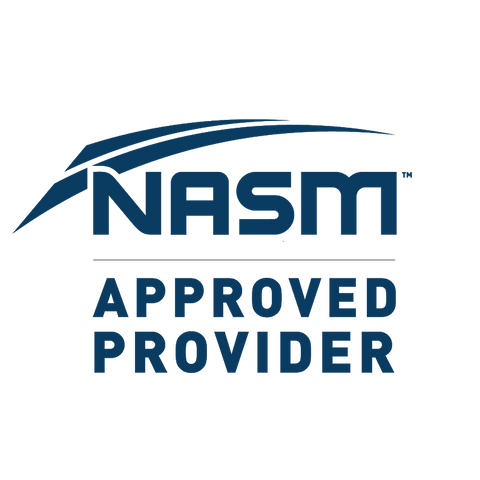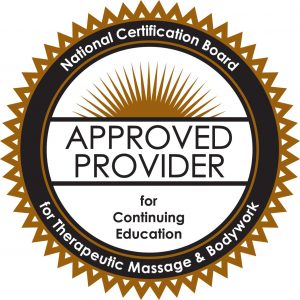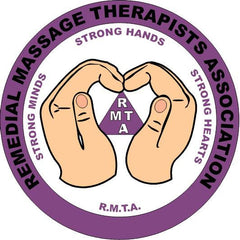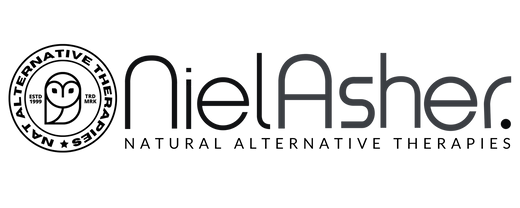What Are The Different Types of Stretching?
Active Isolated Stretching for Hamstrings
Stretching is slightly more technical than swinging a leg over a park bench
There are rules and techniques that will maximize its benefits and minimize the risk of injury.
Here we will look at the different types of stretching, the particular benefits, and the risks and uses, as well as give a description of how each type is performed.
Just as there are many different ways to strength train, there are also many different ways to stretch.
However, it is important to note that no one way in particular, or no one type of stretching, is better than another.
Each type has its own advantages and disadvantages, and the key to getting the most out of stretching lies in being able to match the right type of stretching to the purpose or goal you are trying to achieve.
For example, proprioceptive neuromuscular facilitation (PNF) and passive stretching are great for creating permanent improvements in flexibility, but they are not very useful for warming up or preparing the body for activity.
Dynamic stretching, on the other hand, is great for warming up, but can be dangerous if used in the initial stages of injury rehabilitation.
Although there are many different ways to stretch, they can all be grouped into one of two categories: static or dynamic.
Trigger Point Therapy - Stretching
There's much debate about the effectiveness of muscle stretching both for the prevention and as part of the treatment for trigger points.
There is very little hard evidence regarding the direct link between stretching and whilst there is a wealth of research about the overall benefits of stretching, much (or most) of this evidence is conflicting and too often misinterpreted in the treatment room.
As more and more therapists have incorporated a knowledge of trigger point therapy, there is a large base of anecdotal evidence to support the connection between stretching and trigger points.
Talk with trainers and therapists in the training rooms of elite sports and athletics, and you'll quickly learn that the majority of therapists will state the importance of stretching on positive outcomes - when treating trigger points.
It is also highly likely (again anecdotal) that a good stretching regime may be highly influential in the prevention of active trigger points. This is also likely to be true for just about everyone and not only athletes.
Static Stretches
The term “static stretches” refers to stretching exercises that are performed without movement.
In other words, the individual gets into the stretch position and holds the stretch for a specific amount of time.
Static Stretching
Static stretching is performed by placing the body into a position whereby the muscle (or group of muscles) to be stretched is under tension.
To begin, both the antagonist, or opposing muscle, and the agonist, or muscle to be stretched, are relaxed.
Then slowly and cautiously the body is moved to increase the tension of the muscle being stretched.
At this point the position is held or maintained to allow the muscle to lengthen.
A minimum hold time of about 20 seconds is required for the muscle to relax and start to lengthen, while diminishing returns are experienced after 45–60 seconds.
Static stretching is a very safe and effective form of stretching, with a limited threat of injury. It is a good choice for beginners and sedentary individuals.

Passive (or Assisted) Stretching
This form of stretching is very similar to static stretching; however, another person or apparatus is used to help further stretch the muscle.
Due to the greater force applied to the muscle, this form of stretching is slightly more hazardous.
Therefore, it is very important that any apparatus used is both solid and stable.
When using a partner it is imperative that no jerky or bouncing force is applied to the stretched muscle.
So, choose a partner carefully – the partner is responsible for the safety of the muscles and joints while performing the stretching exercises.
Passive stretching is useful in helping to attain a greater range of movement, but carries with it a slightly higher risk of injury.
It can also be used effectively as part of a rehabilitation program or as part of a cool-down.

Example of Passive Stretching
Active Stretching
Active stretching is performed without any aid or assistance from an external force.
This form of stretching involves using only the strength of the opposing muscles (antagonists) to generate a stretch within the targeted muscle group (agonists). The contraction of the opposing muscles helps to relax the stretched muscles.
A classic example of an active stretch is one where an individual raises one leg straight out in front as high as possible and then maintains that position without any assistance from a partner or object.
Active stretching is useful as a rehabilitation tool and a very effective form of conditioning before moving on to dynamic stretching exercises.
This type of stretching exercise is usually quite difficult to hold and maintain for long periods of time and the stretch position is therefore usually only held for 10–15 seconds.

Example of Active Stretching
PNF Stretching
PNF stretching is a more advanced form of flexibility training, which involves both the stretching and contracting of the muscle group being targeted.
PNF stretching was originally developed as a form of rehabilitation and for that function it is very effective.
It is also excellent for targeting specific muscle groups and, as well as increasing flexibility (and range of movement), it also improves muscular strength.
There are many different variations of the PNF stretching principle and sometimes it is referred to as “contract-relax stretching” or “hold-relax stretching.”
Another variation of the PNF technique is “post isometric relaxation (PIR).”
The area to be stretched is positioned so that the muscle (or muscle group) is under tension.
The individual then contracts the stretched muscle for 5–6 seconds while a partner (or immoveable object) applies sufficient resistance to inhibit movement. The effort of contraction should be relevant to the level of conditioning.
The contracted muscle is then relaxed and a controlled stretch is applied for about 30 seconds.
The client is then allowed 15 to 30 seconds to recover and the process is repeated 2–4 times.
Information differs slightly about timing recommendations for PNF stretching.
There are conflicting responses to the questions “For how long should I contract the muscle group?” and “For how long should I rest between each stretch?”.

Example of PNF Stretching
Isometric Stretching
Isometric stretching is a form of passive stretching similar to PNF, but the contractions are held for a longer period of time.
Isometric stretching places high demands on the stretched muscles and is not recommended for children or adolescents who are still growing.
Other recommendations include allowing at least 48 hours’ rest between isometric stretching sessions and performing only one isometric stretching exercise per muscle group in a session.
A classic example of how isometric stretching is used is the standing “push-the-wall” calf stretch, where the participant stands upright, leans forward against a wall, and then places one foot as far from the wall as is comfortable while making sure that the heel remains on the ground.
In this position, the participant then contracts the calf muscles as if trying to push the wall down.
To perform an isometric stretch, assume the position of the passive stretch and then contract the stretched muscle for 10–15 seconds.
Be sure that all movement of the limb is restricted. Then relax the muscle for at least 20 seconds. This procedure should be repeated 2–5 times.

Example of Isometric Stretching
Dynamic Stretches
The term “dynamic stretches” refers to stretching exercises that are performed with movement. In other words, the individual uses a swinging or bouncing motion to extend their range of movement and flexibility.
Listed below are four different types of dynamic stretching exercises.
Ballistic Stretching
Ballistic stretching is an outdated form of stretching that uses momentum generated by rapid swinging, bouncing, and rebounding movements to force a body part past its normal range of movement.
The risks associated with ballistic stretching far outweigh the gains, especially when better gains can be achieved by using other forms like dynamic and PNF stretching.
Other than potential injury, the main disadvantage of ballistic stretching is that it fails to allow the stretched muscles time to adapt to the stretched position and, instead, may cause the muscles to tighten up by repeatedly triggering the stretch (or myotatic) reflex.

Example of Ballistic Stretching
Dynamic Stretching
Unlike ballistic stretching, dynamic stretching uses a controlled, soft bounce or swinging motion to move a particular body part to the limit of its range of movement.
The force of the bounce or swing is gradually increased but should never become radical or uncontrolled.
Do not confuse dynamic stretching with ballistic stretching. Dynamic stretching is slow, gentle, and very purposeful.
At no time during dynamic stretching should a body part be forced past the joint’s normal range of movement.
Ballistic stretching, on the other hand, is much more aggressive and its very purpose is to force the body part beyond the limit of its normal range of movement.
Active Isolated Stretching
Active isolated (AI) stretching is a form of stretching developed by Aaron L. Mattes and is sometimes referred to as the “Mattes Method.”
It works by contracting the antagonists, or opposing muscle group, which forces the stretched muscle group to relax.
The procedure for performing AI stretching is as follows.
1. Choose the muscle group to be stretched and then assume the appropriate starting position.
2. Actively contract the antagonists, or opposing muscle group.
3. Move into the stretch quickly and smoothly.
4. Hold for 1–2 seconds and then release the stretch.
5. Repeat 5–10 times.
While AI stretching certainly has some benefits (mainly for the professional or well-conditioned athlete), it also has a lot of unsubstantiated claims.
One such claim is that AI stretching does not engage the stretch reflex, because the stretch is only held for 2 seconds or less (Mattes 2000; Wharton 1996).
This, however, defies basic muscle physiology. The stretch reflex in the calf muscle, for example, is triggered within three-hundredths of a second, so any claim that AI stretching can somehow bypass or outsmart the stretch reflex is probably nothing more than wishful thinking.

Example of Isolated Stretching
Resistance Stretching and Loaded Stretching
Resistance stretching and loaded stretching are forms of dynamic stretching that both contract and lengthen a muscle at the same time.
They work by stretching a muscle group through its entire range of motion while under contraction.
For this reason, both resistance stretching and loaded stretching are as much about strengthening a muscle group as they are about stretching it.
Like AI stretching above, resistance stretching and loaded stretching do have their benefits.
The five- time Olympic swimmer Dara Torres credits a portion of her swimming success to the use of resistance stretching.
However, these forms of stretching place high demands on the musculoskeletal system and therefore are recommended only for professional or well-conditioned athletes.
Links
Find a Trigger Point Professional in your area
More Articles About Trigger Points
Certify as a Trigger Point Therapist
About NAT Courses
As a manual therapist or exercise professional, there is only one way to expand your business - education!
Learning more skills increases the services that you offer and provides more opportunity for specialization.
Every NAT course is designed to build on what you already know, to empower you to treat more clients and grow your practice, with a minimal investment in time and money.
Help Desk
About Niel Asher Education
Niel Asher Education is a leading provider of distance learning and continued education courses.
Established in the United Kingdom in 1999, we provide course and distance learning material for therapists and other healthcare professionals in over 40 countries.
Our courses are accredited by over 90 professional associations and national accreditation institutions including the National Academy of Sports Medicine (NASM) and National Certification Board for Therapeutic Massage and Bodywork (NCBTMB). Full details of all international course accreditations can be found on our website.
Printed course materials and other products offered on our websites are despatched worldwide from our 3 locations in the UK (London), USA (Pennsylvania) and Australia (Melbourne).
More About Us
NAMTPT AWARD
We are honored to have received the "Excellence in Education" Award from the National Association of Myofascial Trigger Point Therapists.
Since 1999 Niel Asher Education has won numerous awards for education and in particular for education and services provided in the field of trigger point therapy.
Read Full Article
Award Winning Instructors
Niel Asher Healthcare course instructors have won a host of prestigious awards including 2 lifetime achievement honorees - Stuart Hinds, Lifetime Achievement Honoree, AAMT, 2015, and Dr. Jonathan Kuttner, MD, Lifetime Achievement Honoree, NAMTPT, 2014.
Meet the Instructors
Accreditation

If you are a qualified/licensed manual therapist or exercise/fitness professional you can expand your credentials with NAT certification.
In addition to national accreditation for continued education, each course that we offer includes "NAT Learning Credits". By taking and completing courses you can accumulate NAT credits to qualify for NAT certification.
There are currently 3 levels of NAT certification. Certifying NAT is a valuable way to show your clients that you take continued education seriously, and to promote your skills and qualifications.
Most of our courses are accredited for CE/CPD/CPE. A full list of CE accreditations can be found by clicking on the link below.
About NAT Certification
Niel Asher Technique
Since 1999 the Niel Asher Technique for treating trigger points has been adopted by over 100,000 therapists worldwide, and has been applied to the treatment of a number of common musculoskeletal injuries.
The Niel Asher Technique for treating frozen shoulder was first introduced and published in 1997 and has been widely adopted by therapists and exercise professionals working within elite sports and athletics.
Read More
International Students
Most of our courses are available as either "Printed" or 'Download" editions, wherever you live. Internet connection is required to access online and downloadable material.
When you purchase a download edition, you receive immediate lifetime access to all course material. Course texts can be downloaded and printed if required.
When you purchase a "Printed" edition, you will also receive free access to the download edition.
We ship Worldwide from locations in the USA, UK, and Australia. Most items are despatched within 24 hours and shipping is FREE for all orders over US$50.
Shipping
Where to Start?
We offer a range of over 50 courses, presented by some of the worlds leading manual therapists. All courses are reviewed annually, and new courses are regularly added.
Our courses are modular, and designed to build on what you already know. For more information, please visit our "Where to Start?" page.
Start Here





This trigger point therapy blog is intended to be used for information purposes only and is not intended to be used for medical diagnosis or treatment or to substitute for a medical diagnosis and/or treatment rendered or prescribed by a physician or competent healthcare professional. This information is designed as educational material, but should not be taken as a recommendation for treatment of any particular person or patient. Always consult your physician if you think you need treatment or if you feel unwell.

Ready to take your practice to the next level?
Explore which continuing education course is right for you.
















